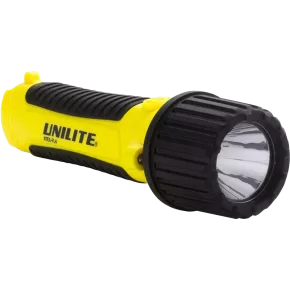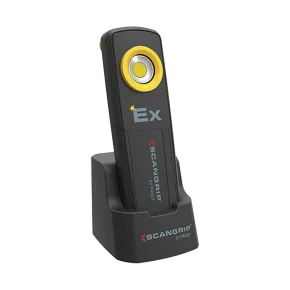What is an ATEX zone? Which product to choose?
Wondering what ATEX zones are? Wondering which products you can buy that comply with these standards?
ATEX zones, definitions :
Not all explosion-proof equipment can be built to the maximum requirements, and therefore cannot be installed in any environment where there is a risk of explosion.
Now that you know what ATEX zones are, you can decipher your equipment's level of protection.
European standards distinguish three main groups of equipment:
Group I: electrical equipment for installation in mines where firedamp may be present.
Group II: electrical equipment for all other areas where there is a potential risk of gas explosion.
Group III: electrical equipment for locations where an explosive dust atmosphere exists, other than mines containing firedamp.
Group II and III equipment are subdivided into gas and dust explosion groups respectively.
Gases, vapors and dusts are classified into explosion groups.
These groups are defined according to the ignition and explosion capacity of an explosive mixture. Dusts are classified in explosion groups according to their size and electrical conductivity. All electrical equipment must indicate for which group (A, B or C) it has been designed. It goes without saying that equipment marked IIC or IIIC meets the most stringent requirements, and is therefore also suitable for gases or dusts in groups A and B.
Firedamp mines
Group I: Methane
Surface industries
Group IIA: Propane, Octane, Acetone, Ammonia
Group IIB: Ethylene, Carbon monoxide
Group IIC: Hydrogen, Carbon Sulfide, Acetylene
Locations with explosive dust atmospheres
Group IIIA: Combustible airborne particles
Group IIIB: Non-conductive dusts
Group IIIC: Conductive dusts
You'll also find a temperature classification for Group II equipment:
The ignition temperature varies according to the nature and characteristics of the gases present. The temperature of the outer surface of explosion-proof equipment cannot be such that it becomes a source of self-ignition for the surrounding environment. For this reason, Group II electrical equipment is subdivided into the following temperature classes, based on maximum surface temperature:
Temperature class / Maximum surface temperature
T1 : 450°C
T2 : 300°C
T3 : 200°C
T4 : 135°C
T5 : 100°C
T6 : 85°C
Once these elements have been identified, you can move on to defining ATEX zones:
Zone classification
Each space or environment where there is a risk of gas explosion is divided into zones (0, 1 or 2), according to the risk posed by any explosive mixture in that space.
Zone 0: includes areas where an explosive gas mixture is present on a permanent or prolonged basis.
Examples: inside tanks, inside reactors.
Zone 1: includes areas where an explosive gas mixture could occur accidentally.
Examples: near filling ports, near zone 0, near pumps and valves.
Zone 2: includes areas where an explosive gas mixture could occur accidentally, and in this case briefly.
Examples: close to zone 0 or 1, area around connecting flanges with smooth gasket.
Zone 20: includes areas where an explosive dust mixture is present on a permanent or prolonged basis.
Example: inside grain silos
Zone 21: includes areas where an explosive dust mixture could occur accidentally.
Example: near filling openings, near zone 20.
Zone 22: includes areas where an explosive dust mixture could occur accidentally, and in this case briefly.
Example: near zone 20 or 21.
Now that you know what the zones correspond to, you can decipher your hardware's level of protection.
Equipment protection levels
Group I: mines
- EPL Ma: Equipment intended for installation in a coal mine, which has a very high level of protection and which, in the event of exceptional equipment malfunction, will continue to operate in an explosive environment.
- EPL Mb: Equipment intended for installation in a coal mine, which has a very high level of protection and which, in the event of a risk of explosion, will be disconnected from the power supply.
Group II: gas
- EPL Ga: Devices intended for installation in an explosive gas environment, which offer a very high level of protection and which, in the event of exceptional device malfunction, guarantee this level of safety.
- EPL Gb: Devices intended for installation in an explosive gas environment, which offer a high level of protection and which, in the event of frequent malfunctions or faulty operation of the device, guarantee this level of safety.
- EPL Gc: Devices intended for installation in an explosive gas environment, which offer a normal level of protection and which, in normal operation, guarantee this level of safety.
Group III: dust
- EPL Da: Devices intended for installation in an explosive dust environment, which offer a very high level of protection and which, in the event of exceptional device malfunction, guarantee this level of safety.
- EPL Db: Devices intended for installation in an explosive dust environment, which offer a high level of protection and, in the event of malfunction, guarantee this level of safety.
- EPL Dc: Devices intended for installation in an explosive dust environment, which offer a normal level of protection and, in normal operation, guarantee this level of safety.
Zone 2 / 22 – Potential Risk
ATEX Inspection Lamp MIDI-EX - 200 LUMENS
ATEX Headlamp LED EX-VIEW - 200 LUMENS
Zone 1 / 21 – Occasional Risk
ATEX LED Floodlight NOVA-EXR2 - 4,000 LUMENS
ATEX Flashlight IL800 Zone 1 - 200 LUMENS
Zone 0 / 20 – Permanent Risk
ATEX Inspection Lamp UNI-EX - 350 LUMENS
ATEX LED Floodlight EX90L-720SS - 720 LUMENS
If you need ATEX products, you've come to the right place. Discover our complete range:
LED ATEX headlamp EX-VIEW - 200 LUMENS
ATEX-H2 225 LUMENS LED headlamp
LED ATEX Flashlight FL4 - 140 LUMENS
LED ATEX Flashlight RA2 - 350 LUMENS
Inspection lamp ATEX MIDI-EX - 200 LUMENS
LED ATEX projector NOVA-EX - 3 400 LUMENS
Share this content










